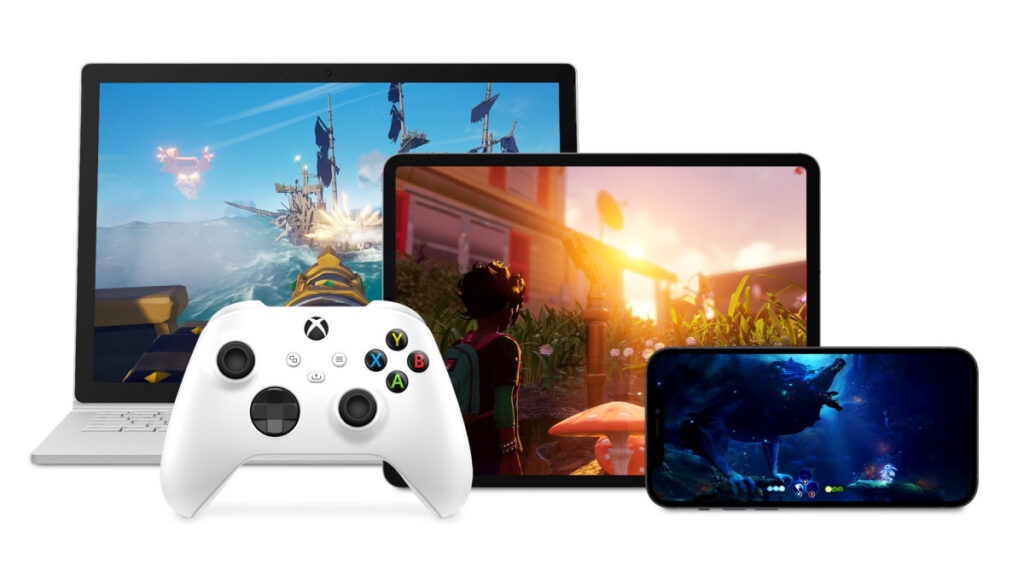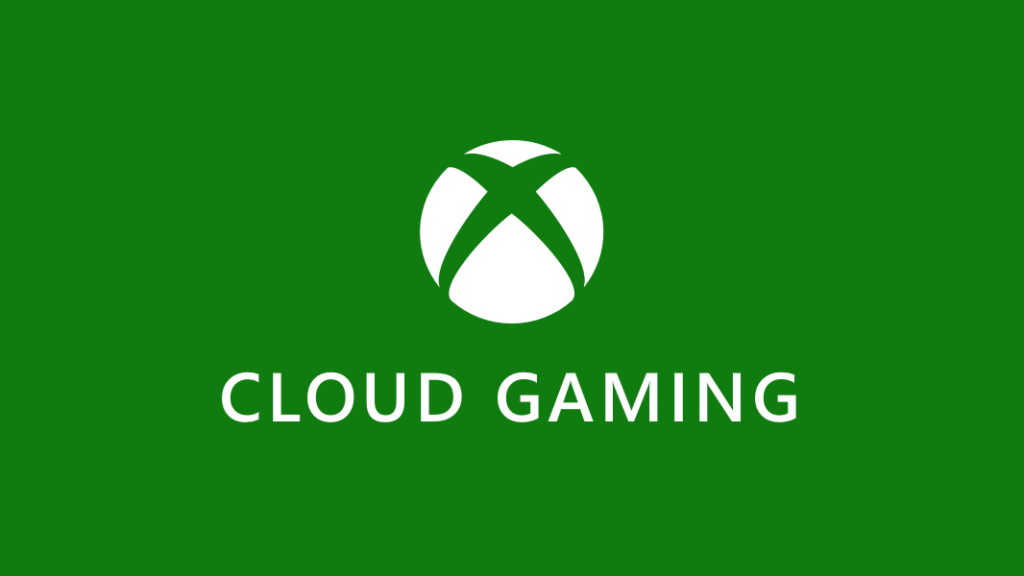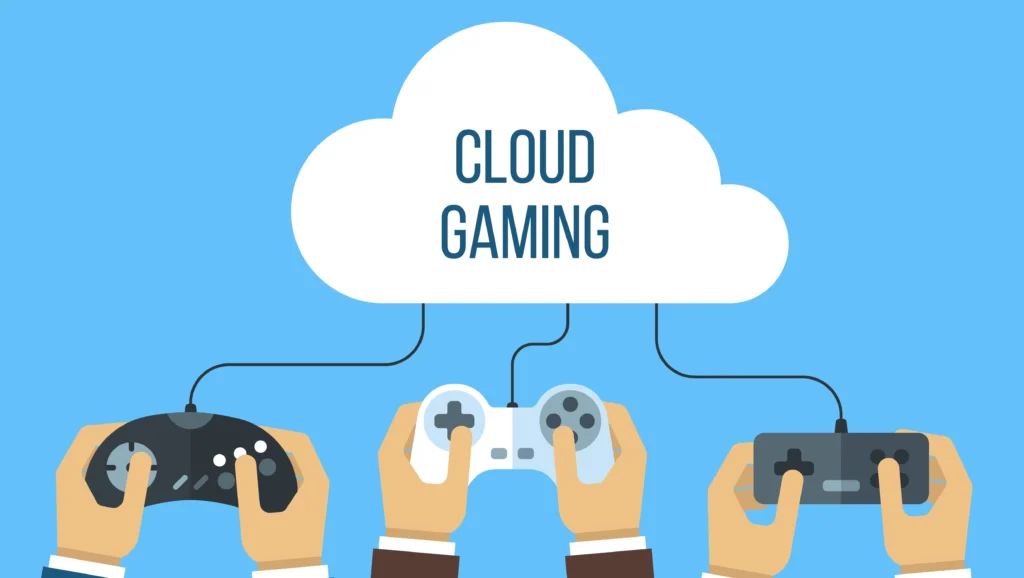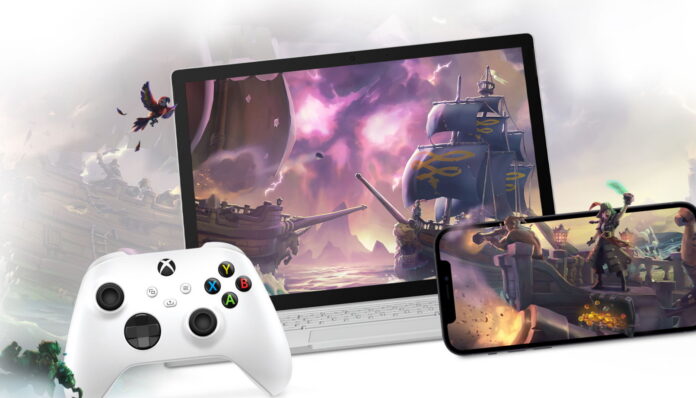Cloud gaming is also referred to gaming-on demand, is a kind of online gaming which runs games on remote servers, and stream games directly to the user’s device. It allows players to play without the requirement of the power of a computer. Game players can play games immediately across a range of platforms, such as consoles, computers, and even mobile phones, so provided they are connected to the ability to connect to an Internet connection.
From the cartoon-like adventure that were the norm during the Atari period to the enveloping virtual reality of the present, gaming technology has undergone an amazing shift. The most prominent aspect of this transformation is the cloud technology gaming which is a new technique that’s changing our way of playing. Grab your hats and buckle up to catch the cloud gaming trend!
Key Benefits For Gamers:
- accessibility You can play high quality games with any device, without the requirement for a high-end hardware.
- It’s convenient: Instant access to games, without lengthy downloads or updating.
- Cost-Effective: Lowers the need to spend money on gaming equipment.
Key Benefits For Developers:
- Wider Audience Reach: Makes games accessible to an audience that may not have access to top-of-the-line gaming consoles or computers.
- Simple Game Updates Developers are able to update or patch games through the server, making sure every player is running the latest version.
- Creative Game Design It encourages development of more challenging and technologically demanding games, without having to worry about the hardware requirements of end users.

Why Cloud Gaming is Increasingly Attractive
- Cloud gaming cloud gaming, there’s no need to replace your PC or console. Instead of spending a fortune on gaming equipment, an ordinary laptop or cellphone would work. There is an inexpensive streaming device and controller to connect to your TV and home network.
- Games can be played on any OS or device. A majority of top-of-the-line mobile games are restricted to PCs (mostly using Windows OS) Windows OS) or consoles. Gaming on the cloud would allow games to become more platform-independent, allowing PCs and tablets running Mac, Linux, Android, and other operating systems to play games that might otherwise only run on Windows.
- Television makers could incorporate cloud-gaming support in their smart televisions. It won’t need high-end, costly gaming equipment -every TV equipped with right software and a controller is able to support gaming without more equipment needed. Certain smart TVs have this function through their OnLive integration or will in the near future. For instance, the Samsung Gaming Hub.
- Most games need a download of 20GB, 10GB or more, before you are able to play the game. Cloud gaming would allow you to begin playing immediately since the server is running the game and you can play the game instantly. This means you don’t have to wait for patches to be updated as well.
- Cloud services will allow extremely simple spectating of sports for example, well-qualified gaming games. Fans wouldn’t even need to have the game installed since the video stream can be replicated to multiple viewers.
- If games could be played via remote servers rather than your personal PC It would make them nearly impossible to copy. This is what makes gaming in the cloud an appealing kind of DRM to publishers, even if it’s not for gamers.
Which Are the Technologies Behind Cloud Gaming?
1. Server Technology and Infrastructure
- Uses high-end data centers that have powerful computing power to play high-demanding games.
- Games are distributed across several servers in order to distribute workload and assure an efficient gaming for global audiences.
2. Streaming Technology and Latency Reduction
- Uses cutting-edge streaming technologies to add real-time HD video and audio streams directly to the player’s device with a minimum delay.
- Utilizes a variety of techniques to aid in the reduction of latency, for example edge computing, whereby it handles data nearer to the user, thereby reducing responses times.
- Constant improvements to compression algorithms benefit to reduce the bandwidth requirement whilst preserving visual quality making cloud gaming possible with regular home internet connection.

Impact of Cloud Gaming on Game Development
Cloud gaming on the development of games is significant and broad and is transforming the future of gaming in a variety of significant ways. This is the ways cloud gaming can affect next-gen game development:
- Democratization of Game Development
Cloud gaming can lower the barriers to entry to developers and allows independent creators to compete with large studios, without the need to purchase expensive equipment and extending the possible audience.
- Enhanced Accessibility and Reach
Games are now accessible from any device connected to the internet which expands the gaming marketplace beyond consoles and PC gaming to also include gamers with mobile devices as well as smart TVs.
- Innovative Game Design Possibilities
Developers are able to leverage the powerful computing power cloud servers for creating greater-than-average and more immersive gaming environments that are not limited by hardware capabilities.
- Streamlined Content Updates and Deployment
Cloud platforms provide quick and easy updates and patches. They allow game developers to continually boost their gaming experience with no worries about the distribution limitations.
- New Monetization Models
Microtransactions and subscription-based services become more lucrative and profitable and help in providing developers with consistent income streams, while reducing dependency on purchases for games that are upfront.
- Collaboration and Development Efficiency
Cloud technology facilitates greater collaboration between global development teams using shared internet-based tools and services. This speeds development processes and cutting costs.
- Challenges in Latency and Bandwidth
Game developers need to come up with innovative ways of the area of reducing latency and improving performance in order to warrant an uninterrupted gaming experience even in places with slow internet connectivity.
- Security and Data Privacy
With user information and games located on servers in remote locations Developers are faced with the issue of creating solid security measures that guard against data breaches while maintaining user confidence.
- Integration of Cutting-Edge Technologies
Cloud gaming opens doors to the integration of advanced technology like AI, AR and VR into games easily, offering new and exciting experiences for players.

Cloud Gaming Business Models: Monetizing the Future of Play
The growth of cloud gaming has opened up the possibility to innovative businesses that can meet the ever-changing needs of gamers as well as developers. This article will take a glance at some major models that shape thecloud gaming game:
- Subscription-based Model: It is an extremely popular option where gamers pay an annual or monthly fee for access to a collection of games that are available on Cloud gaming platform. The model provides gamers with the chance to experience various games without having to make the initial investment for conventional gaming equipment.
Services like Microsoft’s xCloud as well as PlayStation’s PlayStation Now operate on a subscription-based model that gives users access to a range of games, for an annual fee.
- Pay-Per-Play Model The model lets gamers to buy individual games or play these games only for a certain period as with the traditional purchase of digital games. It is a great choice for gamers who may only be attracted to playing certain games and do not require all-inclusive library.
Businesses such as Google Stadia and Nvidia GeForce Now have pay-per-play plans in conjunction with subscription plans. They offer players with variety of needs.
- Freemium Model Certain platforms provide freemium models, in which the games can be played for free and premium games require the purchase of a subscription or a separate. This allows users to test the platform and certain games prior to signing up for paying for a plan.
It is important to remember that cloud gaming business models are changing. few extra things to look out for
- Bundled Service: There’s a growing trend to see cloud gaming subscriptions that are bundled with other offerings including internet connectivity as well as cloud storage. It can prepare an attractive offer to gamers as well as encourage them to try cloud gaming.
- In-App Purchases Like mobile gaming and cloud gaming, certain cloud gaming platforms may allow microtransactions in games to purchase extra material or cosmetic products. It can prepare a means to benefit developers generate more income in addition to subscription costs.
- advertising: Free-to-play cloud gaming models could incorporate ads that aren’t intrusive to earn revenue. These could include targeted ads that are displayed on loading screens, or in between gaming sessions.
Powering the Cloud: The Technological Engine of Cloud Gaming
The smooth experience offered by cloud gaming is based on a solid technology base. We’ll examine what is driving the expansion of this revolutionary way of gaming:
- High-Speed Internet The foundation to cloud gaming is a stable and speedy internet connection. Game data must transfer from the server in the distant location to the device of the user with minimum delay (delay) to help in providing a seamless and easy gaming experience. Technologies such as fiber optic internet as well as 5G networks are essential to giving the required bandwidth to cloud gaming.
- advanced Server Infrastructure: Cloud gaming depends on powerful data centers that are equipped with the latest technology. The servers host the virtual machines which run the games. They require significant processing capacity and graphic processing units (GPUs) as well as ample storage space. The advancements in server virtualization as well as the efficiency of data centers are crucial in order to support the ever-growing demands in cloud gaming.
- Content Delivery Networks (CDNs): CDNs are essential to warrant smooth and stable gaming streaming. The networks that are geographically dispersed provide game information to gamers from the shortest server, thus reducing the amount of latency while also optimizing efficiency. Effective CDN infrastructure is crucial to providing a smooth cloud gaming experience, particularly for players who are geographically dispersed.
- Artificial Intelligence (AI) and Machine Learning (ML): AI and machine learning are being used more and more in order to enhance gaming experience in the cloud. gaming experience. They can be utilized to perform tasks such as dynamic bitrate streaming that changes the video’s quality depending on the internet connection in order to maximize the performance of games and reduce buffering. In addition, AI is able to customize the game’s setting and levels of difficulty in accordance with the player’s behavior, resulting in a better-suited gaming experience.
Cloud gaming can be yet to be developed, however, the fast advancements in these areas are opening the way to a future in which high-performance gaming is available to all regardless of devices or locations.

Challenges and Solutions in Cloud Gaming
1. Latency and Bandwidth Requirements
- A high level of latency or insufficient bandwidth could disrupt the smooth gaming experience. This can lead to delays and low quality.
- New networking technologies are being developed and optimization methods like edge computing to decrease the amount of latency and assure better gaming experience.
2. Data Security and Privacy Concerns
- In the event that developers and gamers save greater amounts of data in cloud storage, the chance of data security breaches as well as privacy concerns increase.
- Implementation of secure encryption techniques Secure authentication protocols and compliance with global security regulations for data protection in order to protect personal data of the user.
3. Overcoming Technical Hurdles
- Development and implementation of the latest technology in order to tackle the challenges inherent in cloud gaming providing a smooth and full gaming game experience for every user.
4. Advances in Compression and Streaming Protocols
- The use of sophisticated compression techniques and efficient streaming protocols for minimizing the use of data without impacting the quality of games, while increasing the accessibility of players who have limited bandwidth.
5. Enhancements in Cloud Infrastructure
- The investment in servers with high performance and creation of scalable cloud infrastructures to meet the increasing need of cloud gaming services. This will ensure the same performance throughout high-volume times.
Within the frame of Cloud Gaming’s Future and Shaping Next-Gen Game Design
- Cloud gaming will transform not just the way we play games, but the method by which they are created as well as distributed and how they can be made money.
- Cloud gaming can open new avenues for game developers..which allows creation of richer and more complex games without being limited by the capabilities of the device used by the player.
- As cloud gaming grows as it does, it is expected to further open up gaming by making the most recent games available to a larger population.. Also bringing new age of gaming innovations and new experiences.

History of Gaming
The development of gaming technology started from modest starting points. In the 70s, arcade cabinets as well as primitive home consoles such as those of the Atari 2600 introduced the world to the excitement of entertainment via digital technology. The first games of the era, although not as graphically appealing or with processing capabilities, laid the groundwork for the current market we see to this day.
The 1980s witnessed the advent of computers with personal computer (PCs) as potential gaming platforms. The games such as Pac-Man as well as Super Mario Bros. captured the attention of millions of players of gamers, showing the possibility to create more engaging and complex games. In the 1990s, we saw the dawn of an age of advanced 3D console gaming through the advent to games like the Sony PlayStation and the Nintendo 64.
While technology continues to improve as was the capability of gaming machines. In 2000, the world saw the introduction of online gaming that allowed gamers to compete and connect from all over the world. HD graphics as well as high-end artificial intelligence (AI) have further blurred distinction between simulation and reality.
Transform Gaming Together: Engage in Cloud Now!
At the cusp of a new age of gaming cloud technology is emerging as the foundation of future-generation game development. It promises to transform the way we build games, share information, and interact in digital realms. With unbeatable accessibility, scaleability and the ability to innovate cloud gaming isn’t just an idea for the future but an era we must take advantage of. With the benefit of cloud computing developers as well as gamers are able to create new possibilities for thrilling experiences that break the limits of conventional limits of hardware. The future is here and it’s all in the cloud.
The Future of Cloud Gaming
Cloud gaming has many potential. There are a few emerging patterns and future developments that you should keep an eye on:
- The development of 5G the widespread acceptance of 5G network will dramatically reduce latency and improve the bandwidth of 5G networks, resulting in an optimal environment to enjoy seamless cloud gaming experience. It could result in increasing the use of cloud gaming specifically when played on mobile devices.
- The potential of AI and Machine Learning: As AI and machine learning improve their capabilities and powerful, they’ll play a more important part for the world of cloud gaming . We are likely to see advancements in the areas of the dynamic material streaming, game-specific suggestions, and AI-powered gaming assistants to rise the gaming experience overall.
- The merging of Realities: The concept of cloud-based virtual reality (VR) and Augmented Reality (AR) gaming is gaining momentum. Cloud gaming managing the heavy processing capabilities, VR and AR experiences are becoming more readily accessible and real blurring the boundaries between physical and digital realms.
- The ever-changing business landscape: Cloud gaming business models will continue to change by focusing in providing players with greater options and greater flexibility. There is a possibility of the development of hybrid models combining aspects of subscriptions, pay-per play as well as in-app purchases in order to accommodate a variety of player needs.
